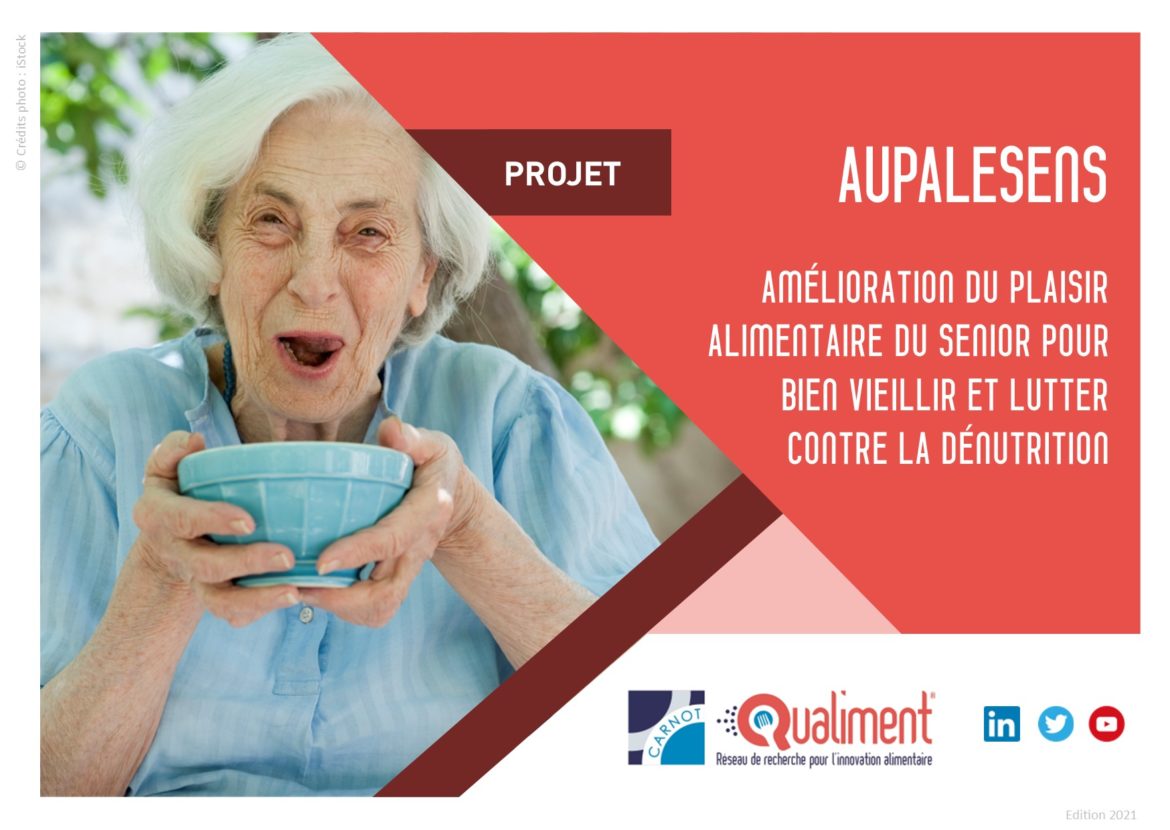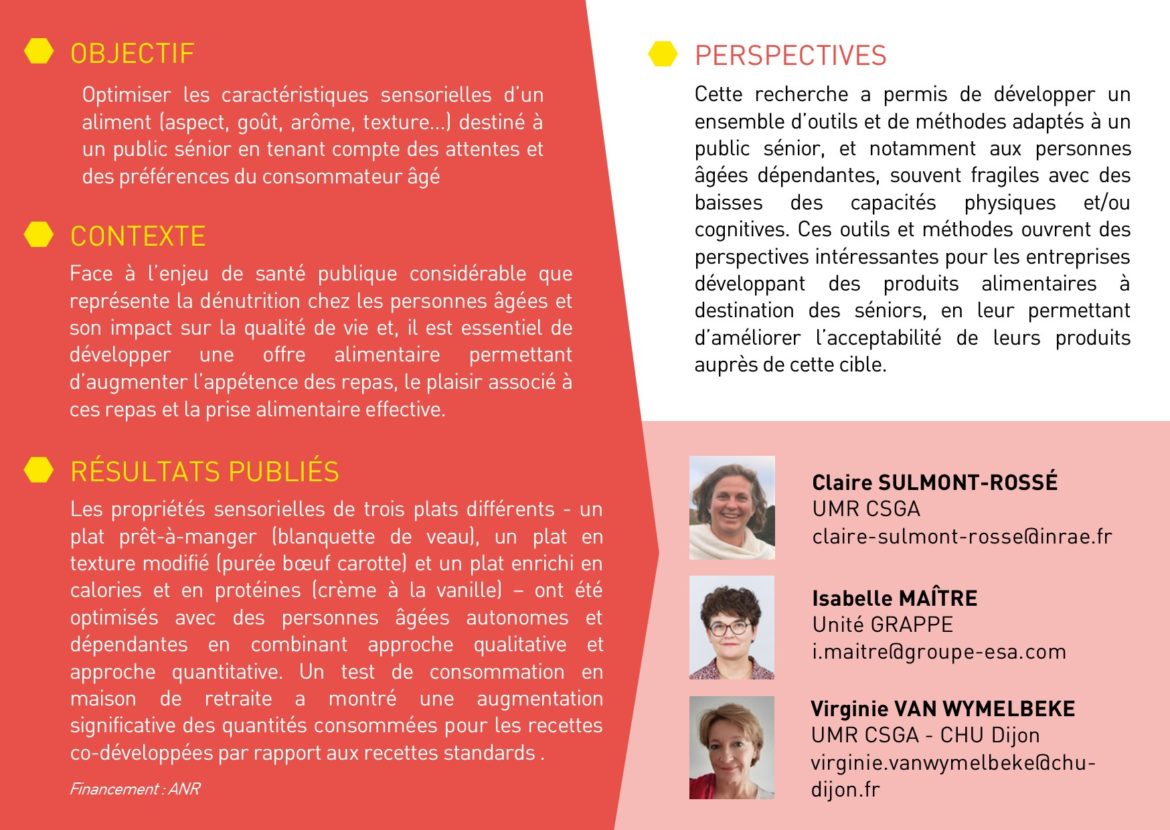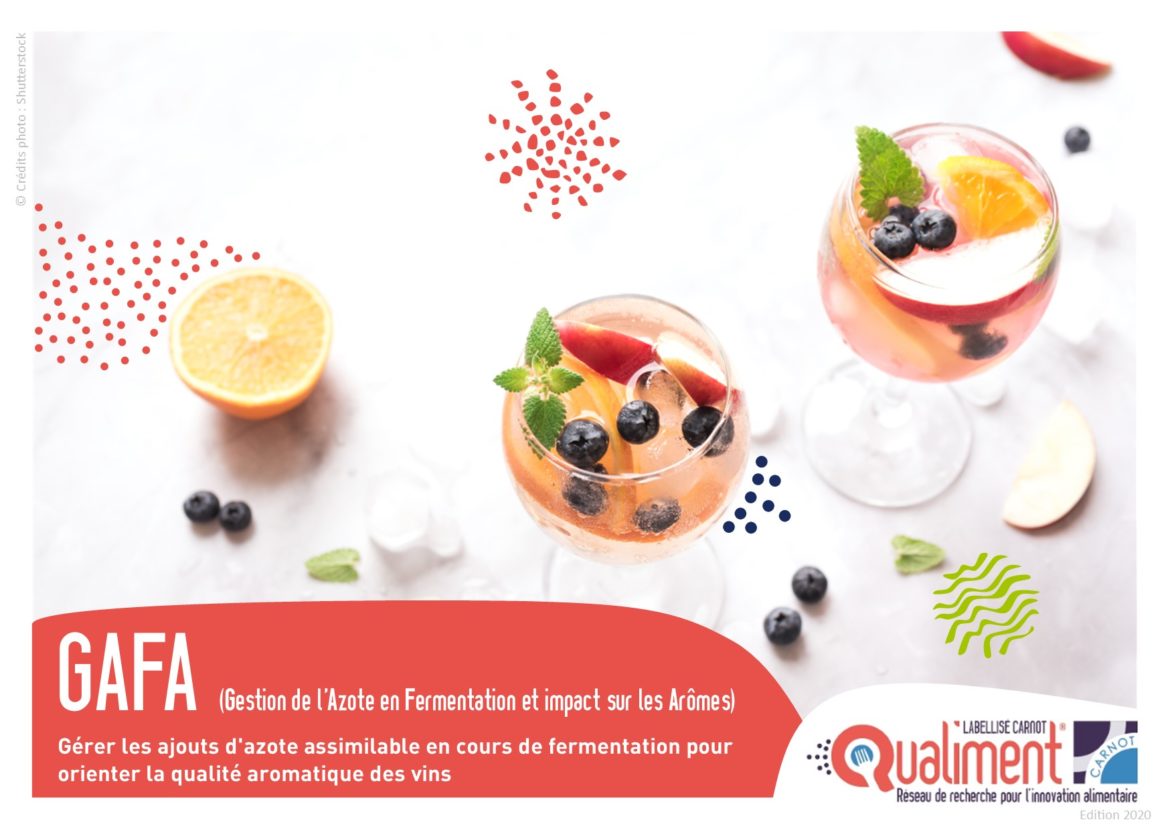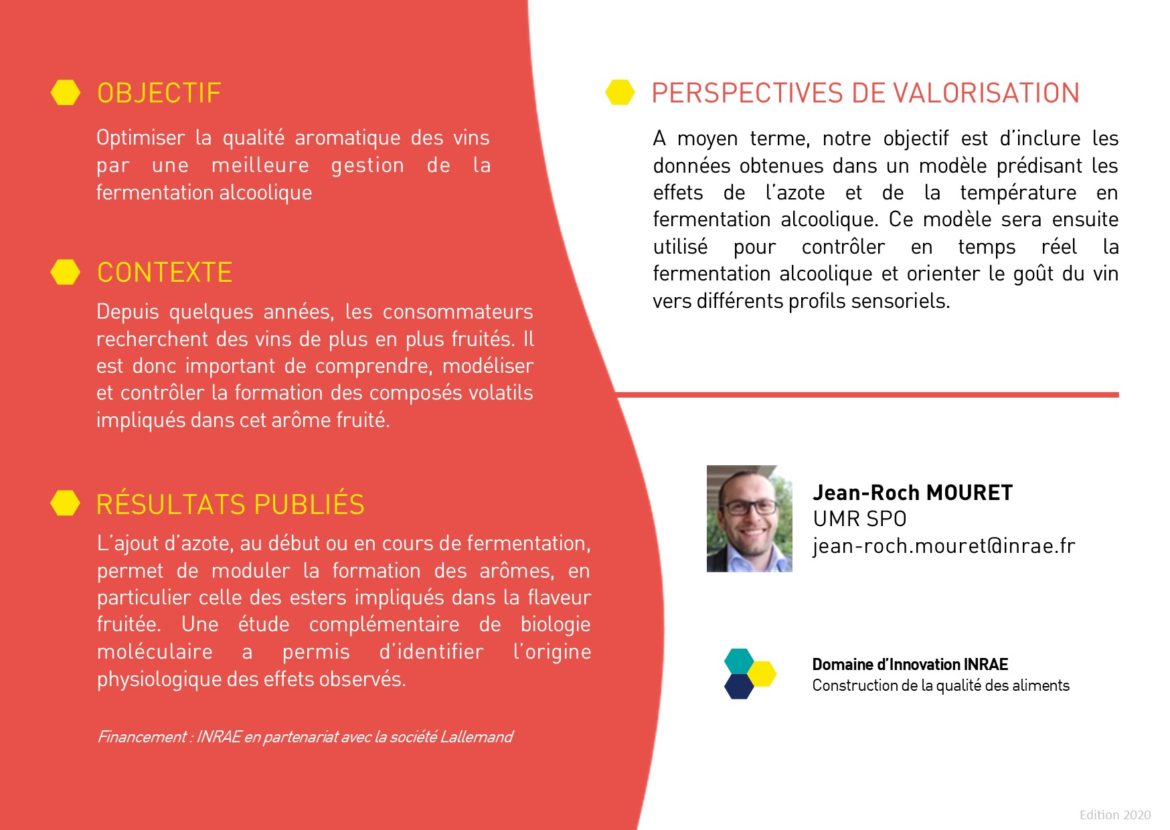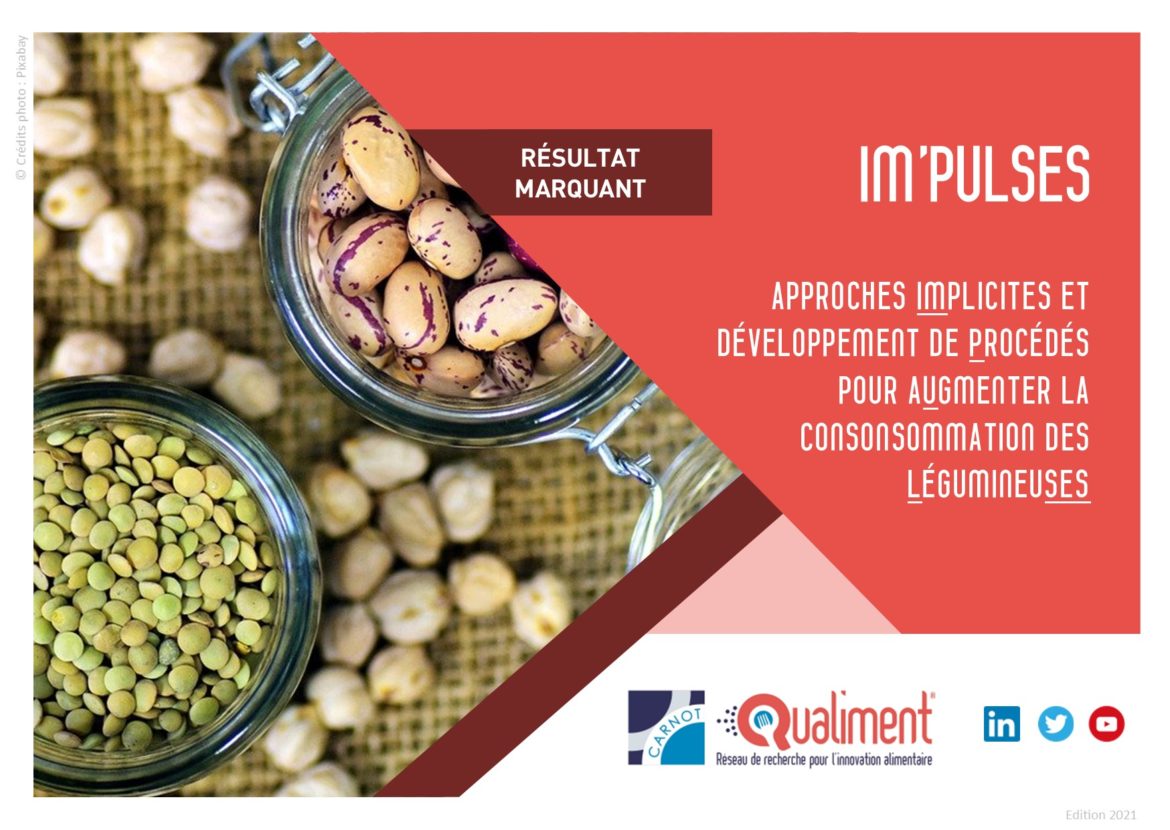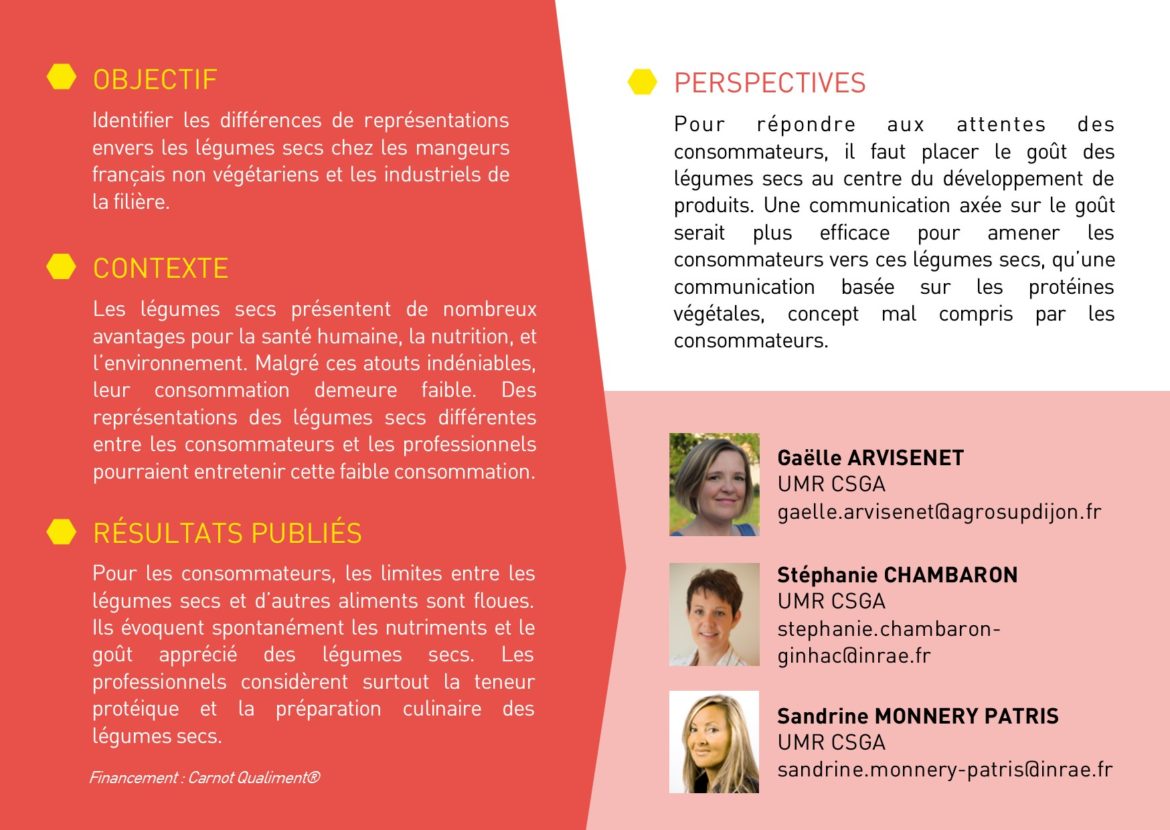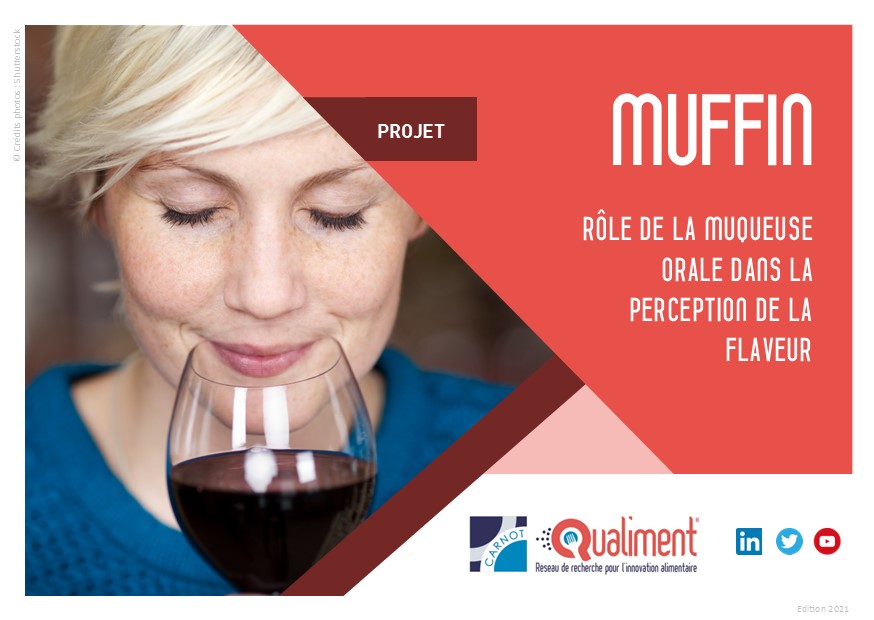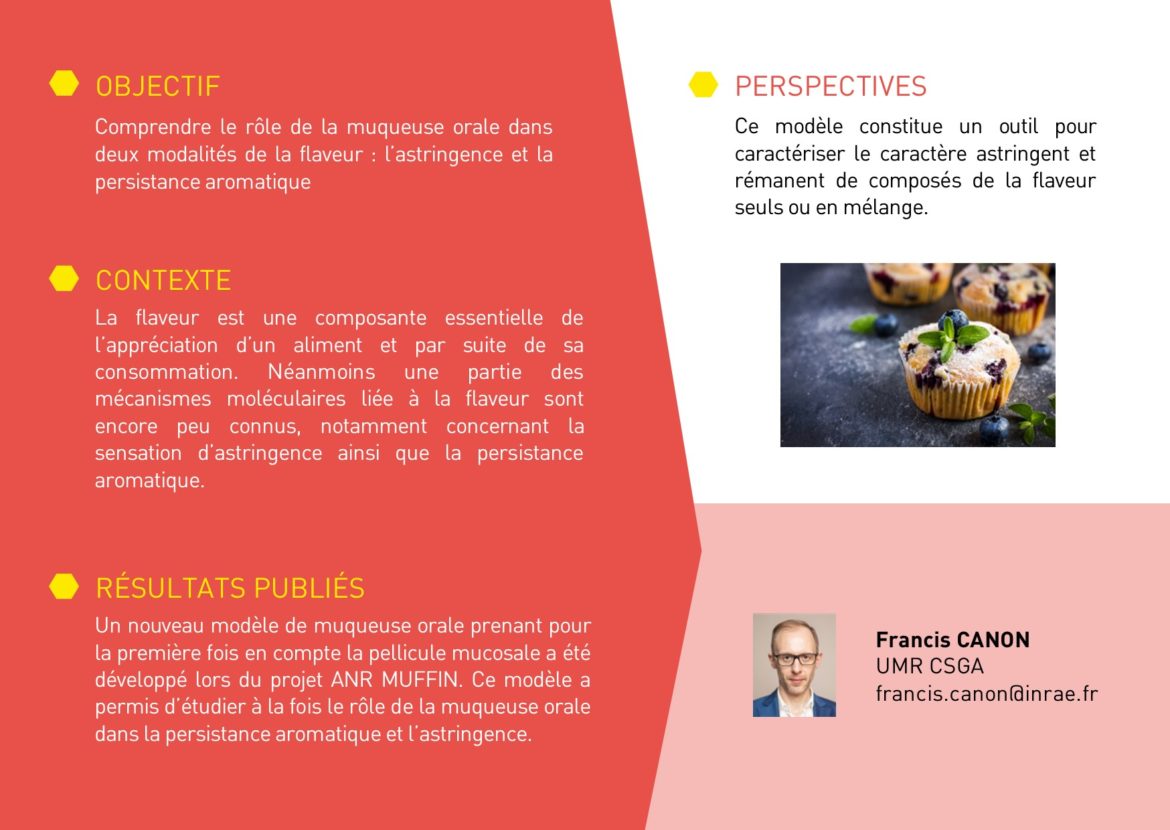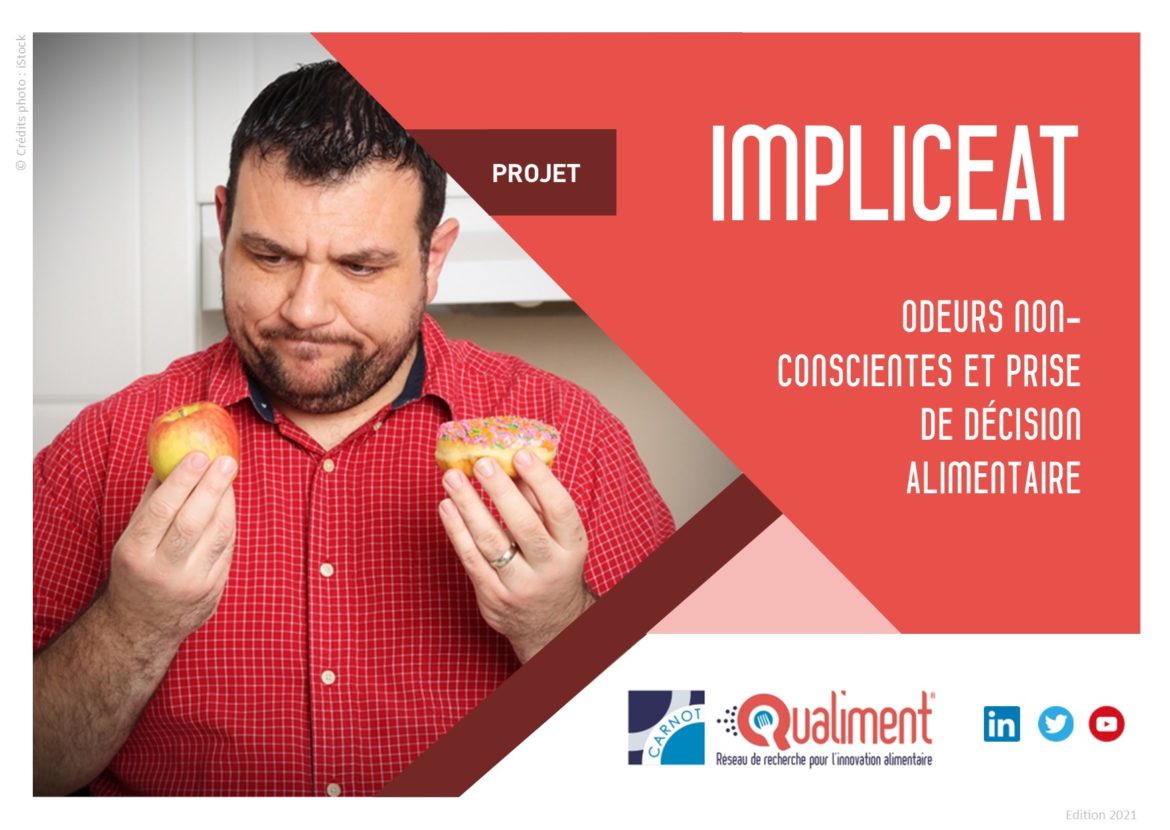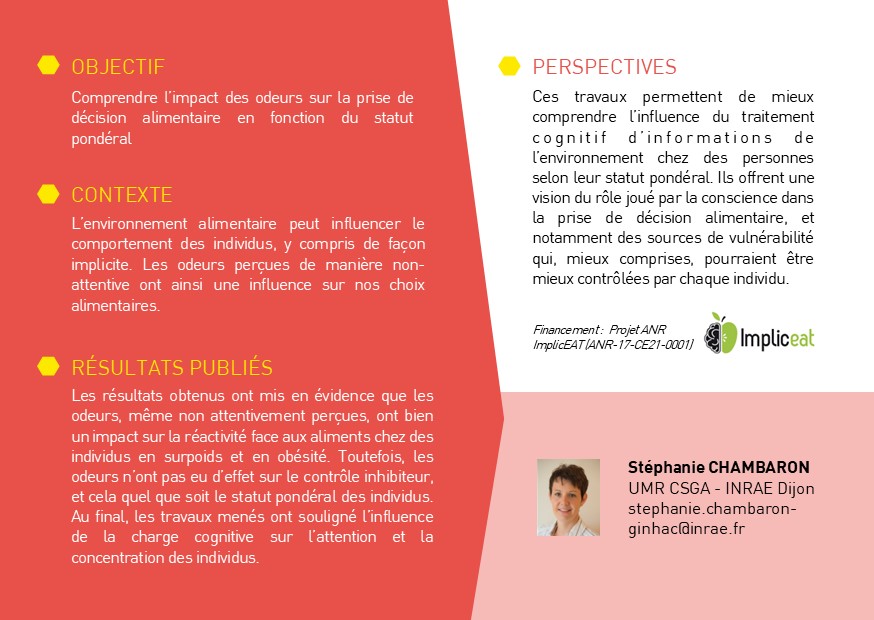Consumer and pleasure

Context and challenges for business innovation
Taste in the broad sense remains the major determinant of consumer behavior, with sometimes contradictory issues between nutritional eating and the pleasure of eating. This taste includes several sensations:
- The 5 tastes in the strict sense, due to specific receptors on the tongue (salty, sweet, bitter, acidic, and the less well known "umami") ;
- Other sensations in the mouth, which are in fact more related to touch (astringency) or even pain receptors (chili);
- Odors, due to certain volatile molecules that can be perceived by the many specific receptors of the nasal mucosa, odors that can be perceived in "orthonasal" (by inhaling through the nose) or in "retronasal" (volatile molecules reach the olfactory epithelium through the back of the palate).
In this context, the stakes for the food industry lie in the knowledge of the perceived molecules, the way to mask them if necessary, in the understanding of their interactions with the receptors and between them, but also in the way the gustatory image is formed by integrating all the senses.
Carnot's contributions to accompany them in their evolution
The Carnot Qualiment® brings its competences on the sensory analysis of foods, the understanding of the physiological mechanisms of the perception of tastes and aromas, the knowledge of the gustatory and olfactory receptors, the psychosensory effects and the role of the consumption environment. It can also support companies in moving towards products with better nutritional quality (less salt, fat, sugar, more fiber or vitamins) without losing sensory quality.
Areas of expertise

Background to date
Food behaviors are evolving over time, with, for example, a strong renewed interest in more "natural" and sustainable products. Consumers' buying patterns are therefore changing as society evolves, justifying the interest in looking at the reasons for these changes, particularly with regard to the perception of products in terms of taste, texture, appearance, etc.
Challenges for business innovation
The plurality, individualization and evolution of food behaviors represent complex issues in the agri-food sector. Product innovation therefore requires an increasingly detailed understanding of food behavior, in conjunction with analysis of consumer perception of products.
Carnot's contributions to accompany them in their evolution
Carnot Qualiment® is able to propose new methods and tools, always more efficient, to measure the appreciation of the consumer towards products or product associations or to measure the brakes to consumption. Researchers also have the expertise to conduct sensory studies aimed at measuring and understanding the impact of taste perception mechanisms on consumer behavior. The objectives of the research carried out are precisely to:
- Develop new tools to measure the consumer's appreciation or his brakes on consumption: implicit measurements, virtual reality, temporal determination of sensations, etc. ;
- Identify the molecules and mechanisms responsible for the olfactory and gustatory qualities of food;
- Understand the formation of the sensory image and the role of memory in food appreciation and choice;
- Understand the role of food and sensory exposures on preferences, profiles and food choices;
- Optimize the production / preservation couple.
 Background to date
Background to date
The taste (salty, sweet, bitter, acidic, but also umami or fatty) and the aroma of food products are decisive for the pleasure of consumers and therefore their re-purchase. They are therefore essential parameters to take into account for any new product design or evolution of processes and raw materials.
Challenges for business innovation
Knowing the odor and taste components of food is an essential issue, which offers the possibility to better control the quality perceived by consumers and to make the link with sensory preferences.
Carnot's contributions to accompany them in their evolution
Understanding the perception of taste and aroma of food products is one of the strong competences of Qualiment® teams, with dedicated platforms and personnel.
Qualiment® teams use classical sensory analysis methods and have developed innovative approaches such as Temporal Dominance of Sensations or the use of a virtual environment. They have access to cohorts (infants, children, elderly, etc.) for adaptation to specific populations.
Carnot Qualiment® brings a world-class expertise on the identification and analysis of volatile compounds (gas chromatography with mass spectrometry detection), the identification of their odorant properties (GC- olfactometry, innovative methods of reconstitution of odorant mixtures, monitoring of the peri-sensory response, magnetic resonance imaging, etc.)
The knowledge at the molecular level of the structure of taste and olfactory receptors allows to use the structure/properties relationships to better understand and design sensory stimuli.

Background to date
Understanding how odorant molecules are formed in foodstuffs is to be able to give the means to improve food products in a "clean label" approach of valorization of their intrinsic potential. Numerous and complex mechanisms (Maillard reaction, fermentations, oxidation of fatty acids by enzymatic oxidation (lipoxygenase) or autooxidation, degradation of carotenoids, hydrolysis of glycosides, dehydration of sugars or amino acids during heat treatments, etc.) are involved, which require an expertise in food science and chemistry carried by the teams of Carnot Qualiment®.
The ability to design foods that are well accepted while decreasing salt and sugar intake requires a good understanding of how salt and sugar are perceived, how and with what temporality they reach the taste receptors. This phenomenon is related to the spatial distribution of salt and sugars or sweeteners in the food, with, for example, a stronger perception if they are on the surface or distributed inhomogeneously.
Challenges for business innovation
The aim is to gain a better understanding of these mechanisms in order to use them in the design of new food products or ingredients, by using the endogenous potential of the raw materials and by designing structures that optimize the diffusion of sapid molecules.
Carnot's contributions to accompany them in their evolution
The members of the Carnot Qualiment® bring their expertise on the chemical, enzymatic or biological mechanisms that produce flavors, from the identification of precursors, the characterization of enzymes, the study of the production kinetics of odorant molecules.
They have developed methods to quantify the diffusion of flavour molecules and to design and modulate their distribution in the structure of food matrices.


